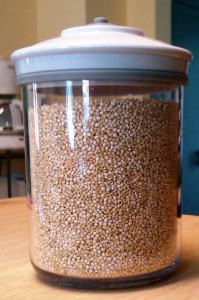Jul 18 2013
Expanding Gluten-Free Choices with Quinoa
Adapting to a gluten-free diet can be challenge without knowing the healthy gluten-free grain alternatives. One great substitute for gluten-containing grains is quinoa. This ancient seed, pronounced “KEEN-wah” was first used in South America but is now becoming more popular due to its versatility and nutritional benefits.
Nutritional Benefits
Quinoa can be used in the same ways that the common grain is used, but has addition nutritional benefits. It is a source of complete protein, which means that it provides all of the nine essential amino acids that our bodies cannot make on their own. Quinoa is also a good source of dietary fiber, B vitamins and is high in minerals such as magnesium, iron, calcium and zinc. According to NutritionData, one cup of cooked quinoa provides 222 calories, 4 grams of healthy fat, 5 grams of dietary fiber and 8 grams of protein.
Cooking with Quinoa
Due to quinoa’s natural coating of saponin, which protects the seed from bugs and insects, you should always rinse before cooking. Cooking this seed is very simple and can be done in the same way that rice is cooked. Using 1 part grain and 2 parts liquid, you can cook quinoa on the stove until soft, about 10-15 minutes. Aside from simply cooking quinoa in the way that you would cook a grain, you can also grind the seed and use it as a flour substitute. The great part about quinoa is that it tastes great by itself but is also a great addition to many other dishes such as salads and even desserts.
Quinoa is a great option during the summer months due to its lightness and the ease it has on the digestive system.
Written by guest blogger Jaclyn Forbes. Currently working towards her bachelor’s degree in Dietetics at Michigan State University. She hopes to achieve her goal of becoming a Registered Dietitian and share her passion for nutrition with others.
Comments Off on Expanding Gluten-Free Choices with Quinoa
